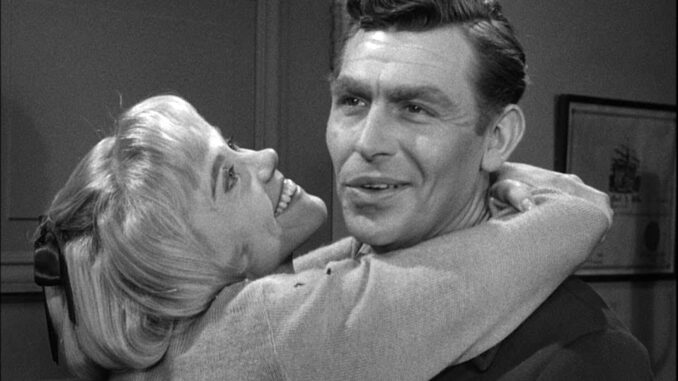
“The City on the Edge of Forever” (April 6, 1967) is often considered the best episode of the series. In it, Captain Kirk (William Shatner) and Spock (Leonard Nimoy) encounter an impossibly ancient stone archway called the Guardian of Forever. The Guardian (Bartell LaRue) is so old it has developed consciousness and serves as a time travel conduit for curious historians. Unexpectedly, Dr. McCoy (DeForest Kelley) runs through the portal — he’s hopped up on drugs — and travels instantly to Earth in 1930. Kirk and Spock follow him to ensure he doesn’t foul with history.
In 1930, Kirk meets an activist named Edith Keeler (Joan Collins), a kindly soul who speaks out against the growing war efforts in Europe. Kirk falls in love. Spock, however, constructs a widget showing him that only two possible futures can come of their time travel interference.

It seems that if Edith Keeler dies in a car accident, it will retain history and cause the Nazis to lose World War II. If she lives, the Nazis will win. Kirk has to make an ethical decision; does he rescue the woman he loves, or let her die in order to restore history? It’s a great premise for a “Twilight Zone” episode.
If one should want to criticize “The City on the Edge of Forever,” one might point out that Kirk could have simply brought Edith with him back to the future. That way, she would survive, and her disappearance in 1930 would have fulfilled the anti-Nazi timeline. In 2019, the legendary Joan Collins talked with StarTrek.com about working on the episode, and recalled having to report to the same soundstage where NBC shot “The Andy Griffith Show.” Odd that a sci-fi series should also include shots of Floyd’s Barbershop.
It’s the Andy Griffith Show, starring … Spock?
